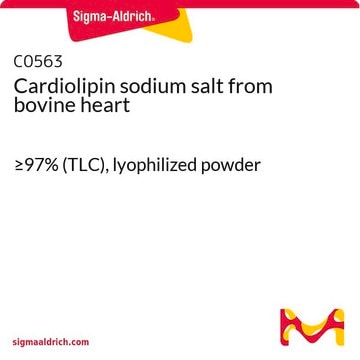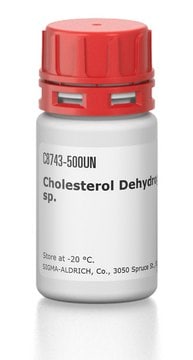830843P
Avanti
10:0 PA
1,2-didecanoyl-sn-glycero-3-phosphate (sodium salt), powder
Synonym(s):
PA(10:0/10:0)
About This Item
Recommended Products
assay
>99% (TLC)
form
powder
packaging
pkg of 1 × 25 mg (830843P-25mg)
pkg of 1 × 500 mg (830843P-500mg)
manufacturer/tradename
Avanti Research™ - A Croda Brand 830843P
lipid type
cardiolipins
phospholipids
shipped in
dry ice
storage temp.
−20°C
SMILES string
[H][C@@](COP([O-])(O)=O)(OC(CCCCCCCCC)=O)COC(CCCCCCCCC)=O.[Na+]
InChI
1S/C23H45O8P.Na/c1-3-5-7-9-11-13-15-17-22(24)29-19-21(20-30-32(26,27)28)31-23(25)18-16-14-12-10-8-6-4-2;/h21H,3-20H2,1-2H3,(H2,26,27,28);/q;+1/p-1/t21-;/m1./s1
InChI key
YVHWEENUNNUSBE-ZMBIFBSDSA-M
General description
Application
- as a component in the lipid bilayer to study how lipid geometry acts in coat protein I (COPI) vesicle fission
- to study its effects on intracellular Ca2+ concentration ([Ca2+]i) in C6 rat glioma and L2071 mouse fibroblast cells
- to activate protein kinase C (PKC)
- as a cell-free activator in membrane and cytosolic fractions for nicotinamide adenine dinucleotide phosphate (NADPH) oxidase assay
Biochem/physiol Actions
Packaging
Legal Information
Storage Class
11 - Combustible Solids
Certificates of Analysis (COA)
Search for Certificates of Analysis (COA) by entering the products Lot/Batch Number. Lot and Batch Numbers can be found on a product’s label following the words ‘Lot’ or ‘Batch’.
Already Own This Product?
Find documentation for the products that you have recently purchased in the Document Library.
Our team of scientists has experience in all areas of research including Life Science, Material Science, Chemical Synthesis, Chromatography, Analytical and many others.
Contact Technical Service







